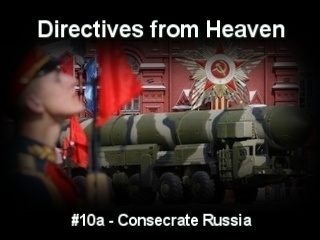A meditation on Lent from
The Liturgical Year by Abbot Dom Guéranger, O.S.B.
This Sunday, called, from the first word of the
Introit, Lætare Sunday, is one of the most solemn of the year. The Church
interrupts her lenten mournfulness; the chants of the Mass speak of nothing but
joy and consolation; the organ, which has been silent during the preceding three
Sundays, now gives forth its melodious voice; the deacon resumes his dalmatic,
and the subdeacon his tunic; and instead of purple, rose-coloured vestments are
allowed to be used. These same rites were practised in Advent, on the third
Sunday, called Gaudete. The Church's motive for introducing this
expression of joy into today's liturgy is to encourage her children to persevere
fervently to the end of this holy season. The real mid-Lent was last Thursday,
as we have already observed; but the Church, fearing lest the joy might lead to
some infringement on the spirit of penance, has deferred her own notice of it to
this Sunday, when she not only permits, but even bids, her children to rejoice!
The Station at Rome is in the basilica of Holy
Cross in Jerusalem, one of the seven principal churches of the holy city. It was
built in the fourth century, by the emperor Constantine, in one of his villas
called Sessorius, on which account it goes also under the name of the Sessorian
basilica. The emperor's mother, St. Helen, enriched it with most precious
relics, and wished to make it the Jerusalem of Rome. With this intention she
ordered a great quantity of earth taken from Mount Calvary to be put on the
site. Among the other relics of the instruments of the Passion which she gave to
this church was the inscription which was fastened to the cross; it is still
there, and is called the Title of the Cross. The name of Jerusalem, which
has been given to this basilica, and which recalls to our minds the heavenly
Jerusalem towards which we are tending, suggested the choice of it as today's
Station. Up to the fourteenth century, when Avignon became for a time the city
of the Popes, the ceremony of the golden rose took place in this church; at
present, it is blessed in the palace where the sovereign Pontiff happens to be
residing at this season.
The blessing of the golden rose is one of the
ceremonies peculiar to the fourth Sunday of Lent, which is called on this
account Rose Sunday. The thoughts suggested by this flower harmonize with the
sentiments wherewith the Church would now inspire her children. The joyous time
of Easter is soon to give them a spiritual spring, of which that of nature is
but a feeble image. Hence, we cannot be surprised that the institution of this
ceremony is of a very ancient date. We find it observed under the pontificate of
St. Leo IX (eleventh century); and we have a sermon on the golden rose preached
by the glorious Pope Innocent III, on this Sunday, and in the basilica of Holy
Cross in Jerusalem. In the middle ages, when the Pope resided in the Lateran
palace, having first blessed the rose, he went on horseback to the church of the
Station. He wore the mitre, was accompanied by all the Cardinals, and held the
blessed flower in his hand. Having reached the basilica, he made a discourse on
the mysteries symbolized by the beauty, the colour, and the fragrance of the
rose. Mass was then celebrated. After the Mass, the Pope returned to tile
Lateran palace. Surrounded by the sacred college, he rode across the immense
plain which separates the two basilicas, with the mystic flower still in his
hand. We may imagine the joy of the people as they gazed upon the holy symbol.
When the procession had reached the palace gates, if there were a prince
present, it was his privilege to hold the stirrup, and assist the Pontiff to
dismount; for which filial courtesy he received the rose, which had received so
much honour and caused such joy.
At present, the ceremony is not quite so solemn;
still the principal rites are observed. The Pope blesses the golden rose in the
vestiary; he anoints it with holy chrism, over which he sprinkles a scented
powder, as formerly; and when the hour for Mass has come, he goes to the palace
chapel, holding the flower in his hand. During the holy Sacrifice, it is
fastened to a golden rose-branch prepared for it on the altar. After the Mass,
it is brought to the Pontiff, who holds it in his hand as he returns from the
chapel to the vestiary. It is usual for the Pope to send the rose to some prince
or princess, as a mark of honour; sometimes, it is a city or a Church that
receives the flower.
We subjoin a free translation of the beautiful
prayer used by the sovereign Pontiff when blessing the golden rose. It will give
our readers a clearer appreciation of this ceremony, which adds so much
solemnity to the fourth Sunday of Lent. 'O God! by whose word and power all
things were created, and by whose will they are all governed! O Thou that art
the joy and gladness of all Thy faithful people! we beseech Thy divine Majesty,
that Thou vouchsafe to bless and sanctify this rose, so lovely in its beauty and
fragrance. We are to bear it, this day, in our hands, as a symbol of spiritual
joy; that thus the people that is devoted to Thy service, being set free from
the captivity of Babylon by the grace of Thine only-begotten Son who is the
glory and the joy of Israel, may show forth, with a sincere heart, the joys of
that Jerusalem, which is above, and is our mother. And whereas Thy Church,
seeing this symbol, exults with joy for the glory of Thy Name; do Thou, O Lord!
give her true and perfect happiness. Accept her devotion, forgive us our sins,
increase our faith; heal us by Thy word, protect us by Thy mercy; remove all
obstacles; grant us all blessings; that thus this same Thy Church may offer unto
Thee the fruit of good works; and walking in the odour of the fragrance of that
Flower, which sprang from the root of Jesse, and is called the Flower of the
field, and the Lily of the valley, may she deserve to enjoy an endless joy in
the bosom of heavenly glory, in the society of all the saints, together with
that divine Flower, who liveth and reigneth with Thee in the unity of the Holy
Ghost, world without end. Amen.'
We now come to the explanation of another name
given to the fourth Sunday of Lent, which was suggested by the Gospel of the
day. We find this Sunday called in several ancient documents, the Sunday of the
five loaves. The miracle alluded to in this title not only forms an essential
portion of the Church's instructions during Lent, but it is also an additional
element of today's joy. We forget for an instant the coming Passion of the Son
of God, to give our attention to the greatest of the benefits He has bestowed on
us; for under the figure of these loaves multiplied by the power of Jesus, our
faith sees that Bread which came down from heaven, and giveth life to the world
(St. John vi. 33). 'The Pasch,' says our Evangelist, 'was near at hand';
and, in a few days, our Lord will say to us: 'With desire I have desired to eat
this Pasch with you' (St. Luke xxii. 15). Before leaving this world to go to His
Father, Jesus desires to feed the multitude that follows Him; and in order to do
this, He displays His omnipotence. Well may we admire that creative power, which
feeds five thousand men with five loaves and two fishes, and in such wise that
even after all have partaken of the feast as much as they would, there remain
fragments enough to fill twelve baskets. Such a miracle is, indeed, an evident
proof of Jesus' mission; but He intends it as a preparation for something far
more wonderful; He intends it as a figure and a pledge of what He is soon to do,
not merely once or twice, but every day, even to the end of time; not only for
five thousand men, but for the countless multitude of believers. Think of the
millions, who, this very year, are to partake of the banquet of the Pasch; and
yet, He whom we have seen born in Bethlehem (the house of bread) is to be the
nourishment of all these guests; neither will the divine Bread fail. We are to
feast as did our fathers before us; and the generations that are to follow us,
shall be invited as we now are, to come and taste how sweet is the Lord ( Ps.
xxxiii. 9.)
But observe, it is in a desert place, as we learn
from St. Matthew (St. Matt. xiv. 13), that Jesus feeds these men, who represent
us Christians. They have quitted the bustle and noise of cities in order to
follow Him. So anxious are they to hear His words, that they fear neither hunger
nor fatigue; and their courage is rewarded. A like recompense will crown our
labours, our fasting and abstinence, which are now more than half over. Let us,
then, rejoice, and spend this day with the light-heartedness of pilgrims who are
near the end of their journey. The happy moment is advancing, when our soul,
united and filled with her God, will look back with pleasure on the fatigues of
the body, which, together with our heart's compunction, have merited for her a
place at the divine banquet.
The primitive Church proposed this miracle
of the multiplication of the loaves as a symbol of the Eucharist, the Bread that
never fails. We find it frequently represented in the paintings of the catacombs
and on the bas-reliefs of the ancient Christian tombs. The fishes, too, that
were given together with the loaves, are represented on these venerable
monuments of our faith; for the early Christians considered the fish to be the
symbol of Christ, because the word 'fish' in Greek is made up of five letters,
which are the initials of these words: Jesus Christ, Son (of)
God, Saviour.
In the Greek Church this is the last day of the
week called, as we have already noticed, Mesonestios. Breaking through
her rule of never admitting a saint's feast during Lent, she keeps this mid-Lent
Sunday in honour of the celebrated abbot of the monastery of Mount Sinai, St.
John Climacus, who lived in the sixth century.
Christ's
Passion as seen and experienced by Veronica (March 8, 1971)
The Passion was seen in vision by Veronica during the praying of the
Sorrowful Mysteries of the Rosary. Present during this phenomenon were Camille
Debrowski, Ben and Mary Salomone, and Evelyn Murphy.
Veronica received the stigmata of the hands and feet at this time. A cross
appeared on her right foot in the instep area, directly in line with the big toe
and second toe, near the center of the instep, but over more to her left side of
the instep, centered between the ankle area and toes. The nail bruise appeared
on the instep of the left foot, more centered between the second and third toe
from the large toe, at the center of the instep. The right foot was crossed over
the left. The cross fitted perfectly in line with the nail mark on the left
foot.
The Passion as related by Veronica:
"Jesus started by requesting that on the three initial beads of the Rosary
we say the Acts of Faith, Hope, and Charity. Then we entered into the Sorrowful
Mysteries.
THE AGONY IN THE GARDEN
"During the first decade I saw Jesus on His knees, bent over in anguish,
praying. He was wearing a long, burgundy-colored cape over an inner garment of
beige-colored material, long and flowing. There was a great sadness in His face,
great sorrow. He was talking to His Father in Heaven:
"'Father, I will drink of this cup, down to the last dreg, if it be Your
will. It is not I that should seek that this cup be removed from Me. My strength
is everlasting in the light, and My heart a bleeding vessel for this cup.'
THE SCOURGING
"During the second Mystery, I cried out, 'No! No! Stop that!' For there was
our beloved Jesus being pulled to and fro as His tormentors pulled His upper
garment from His back. They tied His wrists together and drove a spike into an
upright beam. Jesus' hands were bound by strips of a brown, leather-like cord.
Then the central part of the cord that bound His hands was looped over the spike
in the beam. Poor Jesus was pinned by His hands.
"There were five people in this cave-like room that appeared to be dug out
of a hillside, a sort of hole-room in the hillside.
"I screamed and winced as two soldiers took turns hitting Jesus' bare back
with a long brown, leather-like strap. On this strap were metal hooks, laid
horizontally all along the strap. These nail-like, claw-like fixtures on the
strap cut and scratched deeply into Jesus' flesh, causing blood to pour out. It
was a despicable game with the soldiers. They laughed and joked. Jesus never
said a word.
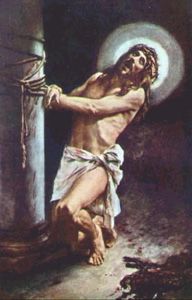 "I cried, 'Say
something! Say something!' He could save Himself, but Jesus remained silent as
they spat and insulted Him. His back became a mass of welts and torn flesh.
Jesus was barefoot; His sandals had fallen off as they banged a stake higher
into the pole and raised poor Jesus up so His toes barely touched the floor. The
floor was just dirt and blood. The soldier remarked, 'Maybe they cut out His
lying tongue. Ha, ha!' Our poor Jesus remained silent.
"I cried, 'Say
something! Say something!' He could save Himself, but Jesus remained silent as
they spat and insulted Him. His back became a mass of welts and torn flesh.
Jesus was barefoot; His sandals had fallen off as they banged a stake higher
into the pole and raised poor Jesus up so His toes barely touched the floor. The
floor was just dirt and blood. The soldier remarked, 'Maybe they cut out His
lying tongue. Ha, ha!' Our poor Jesus remained silent.
"Off to the side I saw a room. There was a large, kettle-like pot, real old
looking--of rough metal, a deep reddish-brown in color, very large. Underneath
was a fire burning; there was a heavy liquid bubbling. Off to the side was
another, longer metal receptacle filled with water. There were two soldiers
dressed in short dresses--short, knee-length skirts, with pointed metal pieces
hanging down in a pattern of triangles all around the waist, front and back.
"They had a metal, vest-like covering on their chests and silver-colored
metal headpieces that were shaped like a cap, but swooped up to a flowing design
on the top. Three other men were almost naked, dressed in diaper-like clothing.
They were holding a long piece of metal. They placed the end in the large
kettle; it had a red-hot glow. Then the third man had a large, mallet-like
hammer, and he beat on the hot metal. He was pounding it round and round until
it looked like a spike. He would then douse it in that metal water trough. Two
soldiers were talking over at the side. Later they took the five spikes. (There
were five large spikes made.)
THE CROWNING WITH THORNS
"I then saw Jesus. He had been cut from the post and had fallen over. A
soldier roughly pulled Him over to a wicker-like stool and plunked Jesus onto
it. Poor Jesus hung forward, and a nasty soldier put a long stick in His hands
to balance Him up, and yelled, 'Ha, ha! So this is the King of the Jews! Let's
dress Him as fitting!'
"The soldier went outside, to return with an armful of brier bush. He used
the metal tongs to make it easier to handle. He made a sort of cap and stuffed a
circlet of briers into it. In that way he could handle it better and shove it on
poor Jesus' head. The thorns were too hard to weave, to stay together, so the
cap was thought of. It was so big, and he kept batting it down with a stick. The
sadist gloated as he swung. Jesus, dearest Savior, said never a word. The pain
was excruciating. Tears coursed down the cheeks of our poor Jesus, but they were
of sorrow. The greatest pain was in His heart!
"Jesus' hands were tied again with the brown, leather-like material; and He
was dragged to His feet. The soldier draped His top gown over His torn back. Oh,
I could see it stick to His oozing blood. Oh, it was horrible!
THE CARRYING OF THE CROSS
"Then a soldier pushed Jesus out of the hole-like entrance, and down a
road. There were many people, all in a spirit of carnival. Two soldiers pushed
Jesus over to the side of the big crossbeam which was carried through the crowd.
It looked like a heavy log--real rough, and a brownish wood. Two soldiers stood
it up and another put Jesus over to it. Two soldiers started to tie His hands
onto it. It was supported across His back and on the shoulders. It looked
awfully heavy and awkward. The brown leather rope was taut across His elbow
area. He seemed to be balancing and supporting the beam as He struggled on.
"There were three ladies and a man walking off to one side with Him. The
ladies were weeping silently. The man had his arm about a lady. The man was very
tall. He had a long, brown gown on, and he had a brown beard and dark brown
hair. The ladies wore beige-colored gowns; but one lady had a purple, coat-like
garment over hers.
"Jesus tripped and fell. He was so weak now, the beam had thrown Him off
balance as He staggered. Poor Jesus fell. One nasty old man ran out of the crowd
to spit and kick Him--the nasty old beast! I tried to tear off my tunic to wipe
the blood out of His eyes. It was awful! He looked up at me--the soldiers
wouldn't let me through. I pulled at my hair in frustration and anguish. Jesus
looked at me, and I saw the love of an eternal, glorious promise. I cried, 'What
could I do?' I screamed, 'Help Him! Help Him, please!' I, Veronica, was helpless
to lift the cross. I could only hope to wipe His dear face.
"Soon a soldier grabbed a man out of the crowd. This man had a long gown on
with stripes down the front, and he had a turban wrapped around his head with
stripes in the front. He sure didn't want to carry the beam, but they knew Jesus
couldn't make it to the outskirts of the town. So this man shouldered the beam
while the insane crowd taunted. Jesus was pushed and pulled along. Dirt and
blood were all over Him; He was a picture of bloody grime.
"I was retching; I was sick. Oh, such a horror! Such torture! How could
they do this to Him? What did He do but love everyone! Beasts! Beasts! Soon the
soldier ran up with the five spikes. When they reached the hill, there was a
long piece of wood already on the ground. A soldier lifted the beam from the
shoulders of this other man and threw it to the ground. Two other soldiers
placed it on top of the long piece of wood to form a cross--long all the way
down, and sort of sticking out at the top. They slammed one spike into the two
beams and the cross was made.
 THE
CRUCIFIXION
THE
CRUCIFIXION
"Two lousy soldiers threw Jesus to the ground, and they pulled His arms out
to stretch across the cross beam. Oh, how it hurt, the back so torn! I could see
the pain in Jesus' eyes, but He never uttered a word. He just looked sad. Then
they took brown, leather-like cord and wrapped it around His wrists at the
board, bound to the board. Then they lifted and tied the wrists to the board,
bound and wound the leather cord around the ankles and the wood to hold Him in
place.
"Then the spikes were thrown onto the ground, and one soldier got down on
his knees and he placed the spike in the center of the palm of poor Jesus' hand.
With that metal mallet he drove it in through the skin and out into the board. I
screamed! I threw up! This was repeated on the right hand. Then Jesus looked up
to the sky. They started on the legs--one large spike into both feet, His right
foot over the left, at a twisted sort of angle, placed to lie flat against each
other. I retched as I heard the metal against flesh and bone and wood. One spike
protruded out the other side. They hammered a block of wood under His poor feet,
'to line 'em up,' they said. It was awful!
"I looked off into the crowd. Oh, there were only nine people there to stay
with Jesus. I now knew His Mother, Mary Cleophas (the wife of Clopas), Mary
Magdalen, and John. Oh, poor Jesus--never a word did He say as they nailed Him
to the wood. Oh, such love!
"Soon two soldiers lifted the head of the wood and three the bottom,
carrying Jesus on the cross, and dropped the end into a hole. It went in with a
thump! Jesus winced. And it tore His hands more. Blood was trickling down His
face. He couldn't move His head. The pain was awful; each movement cut deep. He
sagged a bit, but pulled upward. The sagging tore more.
"Mary and Mary ran up to Him. They did not speak at first; they could talk
with their eyes to each other. They didn't need words. John came over, for
Jesus' bottom tunic fell down. Oh, dear, He was almost naked. I turned away, but
John ran over and tied sort of knots in it, like a diaper. Oh, the humiliation
to poor Jesus! Then Jesus said to John: "Behold, John, your Mother. And this,
Mother, is Your son. I must go to the Father soon."
"The crowd started to move off. Jesus cried: "Abba, abba sabba la bec tori"--that
is what it sounded like--a foreign sound. Sabba sabba sabba la bec tori. (I
can't spell it well, just by sound.) Then He looked up. "I thirst!" (This I
heard in English.)
". . . Water, yellowish water. . . . Jesus' head hung down to His right. It
became dark, so dark. Everyone went away but the nine. They all came close; and
Mary clung to His feet, wordless in sorrow."
 Veronica finished the recitation of what she experienced to find her feet
swollen and her arms sore, the feet marked and the hands stinging. Her wordless
reaction was a mixture of wonder, joy, and love--joy that now she could join
Jesus in His suffering and hold His hand on the road to the Kingdom.
Veronica finished the recitation of what she experienced to find her feet
swollen and her arms sore, the feet marked and the hands stinging. Her wordless
reaction was a mixture of wonder, joy, and love--joy that now she could join
Jesus in His suffering and hold His hand on the road to the Kingdom.
Directives
from Heaven
D1
-
The Holy Sacrifice of the Mass
 PDF
PDF
D2
-
The Holy Eucharist  PDF
PDF
D5
- The Holy Priesthood
 PDF
PDF
D66
-
The Passion of Christ (Part 1)
 PDF
PDF
D67
-
The Passion of Christ (Part 2)
 PDF
PDF
D87
-
Divinity of Jesus Christ  PDF
PDF
D119
-
Jesus Christ, Redeemer  PDF
PDF
D120 -
Resurrection  PDF
PDF
D198
-
Kneel
Before Your God
 PDF
PDF
D228 -
Consecrated Hands
 PDF
PDF
D292 -
Way of
the Cross
 PDF
PDF
Videos online:
| Home |
Introduction |
Bayside Messages |
Directives from Heaven |
Miracles & Cures | Veronica Lueken |
Miraculous Photos |
Videos |
Revised:
February 26, 2012
Lenten readings


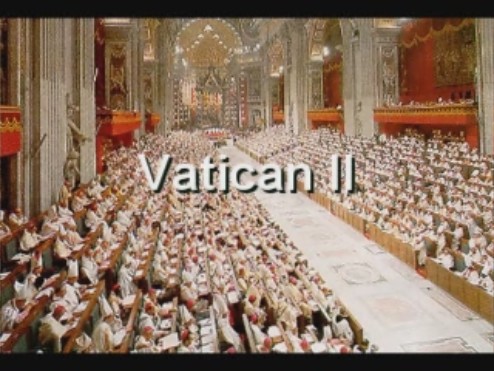 Vatican
II
Vatican
II World
Monetary Crash
World
Monetary Crash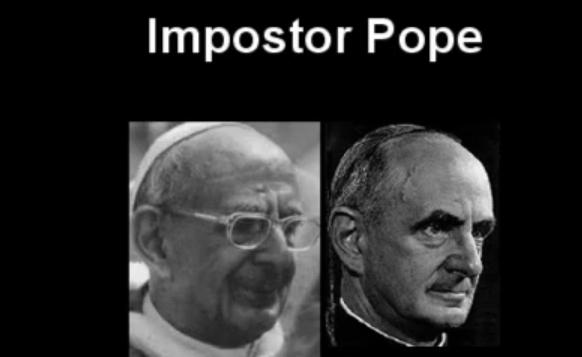 Deception
of the Century
Deception
of the Century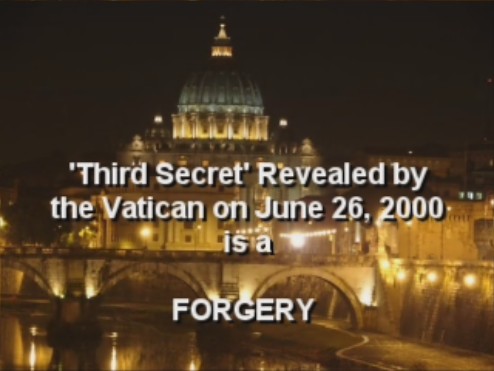 Third
Secret Fabrication
Third
Secret Fabrication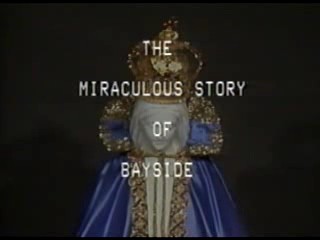 The
Miraculous Story of Bayside
The
Miraculous Story of Bayside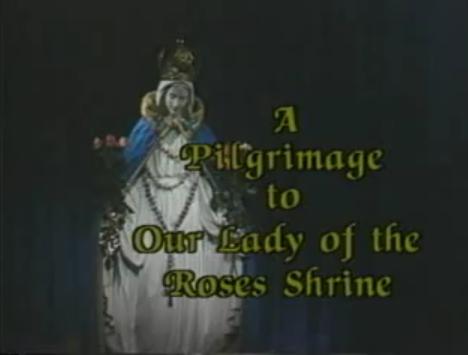 A
Pilgrimage to Our Lady of the Roses Shrine
A
Pilgrimage to Our Lady of the Roses Shrine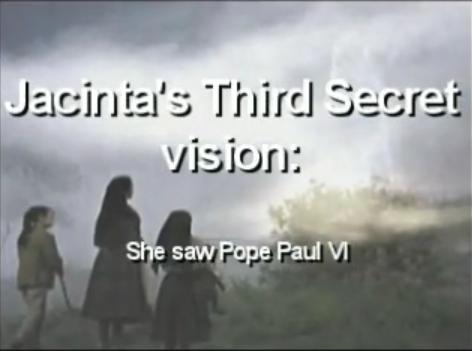 Jacinta's
Third Secret vision: She saw Pope Paul VI
Jacinta's
Third Secret vision: She saw Pope Paul VI